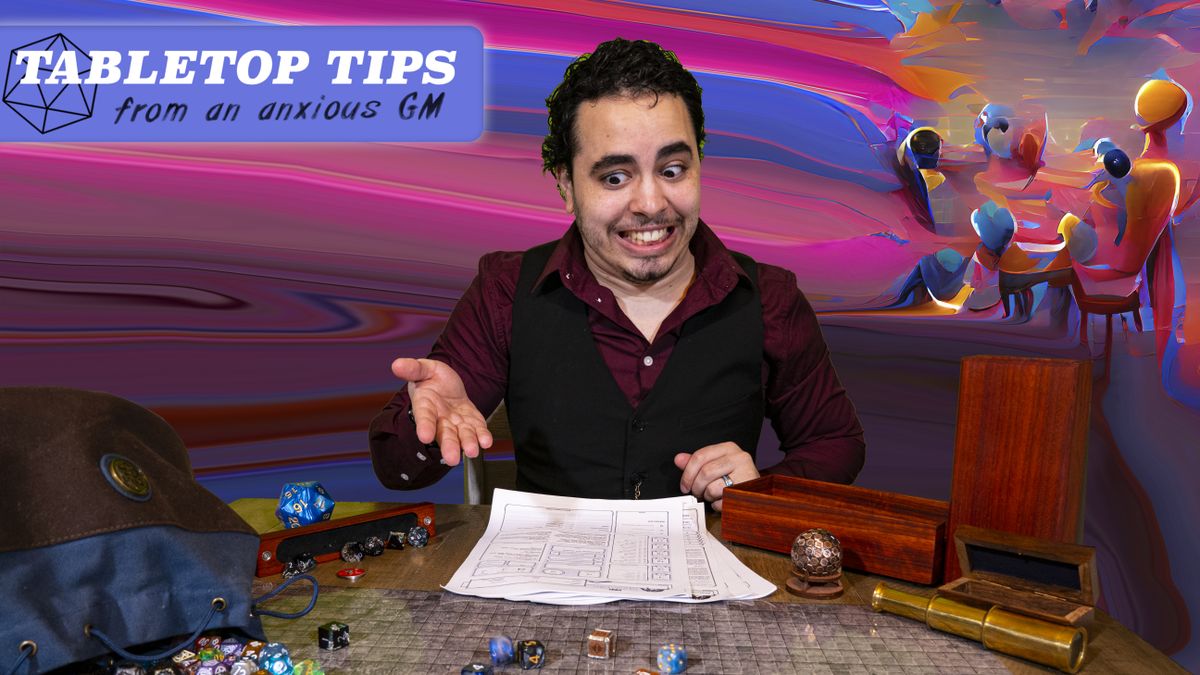Are you tired of plosives? Sick of peaking? Annoyed with your epic monologues being sidelined by your microphone’s crappy pickup? Well, no more! The Shure SM7B is here to save you from your audio nightmare.
The Shure SM7B is an incredibly powerful and precise cardioid XLR microphone packed in a svelte design that’ll make you look as professional as you sound. The bummer is that it costs a whopping $400, and that doesn’t even count the mixer and XLR cable to get you started.
Despite its price, and frustrating instructions, the Shure SM7B is at the top of our best streaming microphones page for a reason.
Shure SM7B price and configurations
The Shure SM7B alone is $400, but there’s a variety of bundles that can send the price higher depending on your accessory needs. Firstly, the original packaging comes with the standard RK345 windscreen, a thicker A7WS windscreen, and the RPM602 switch cover plate.
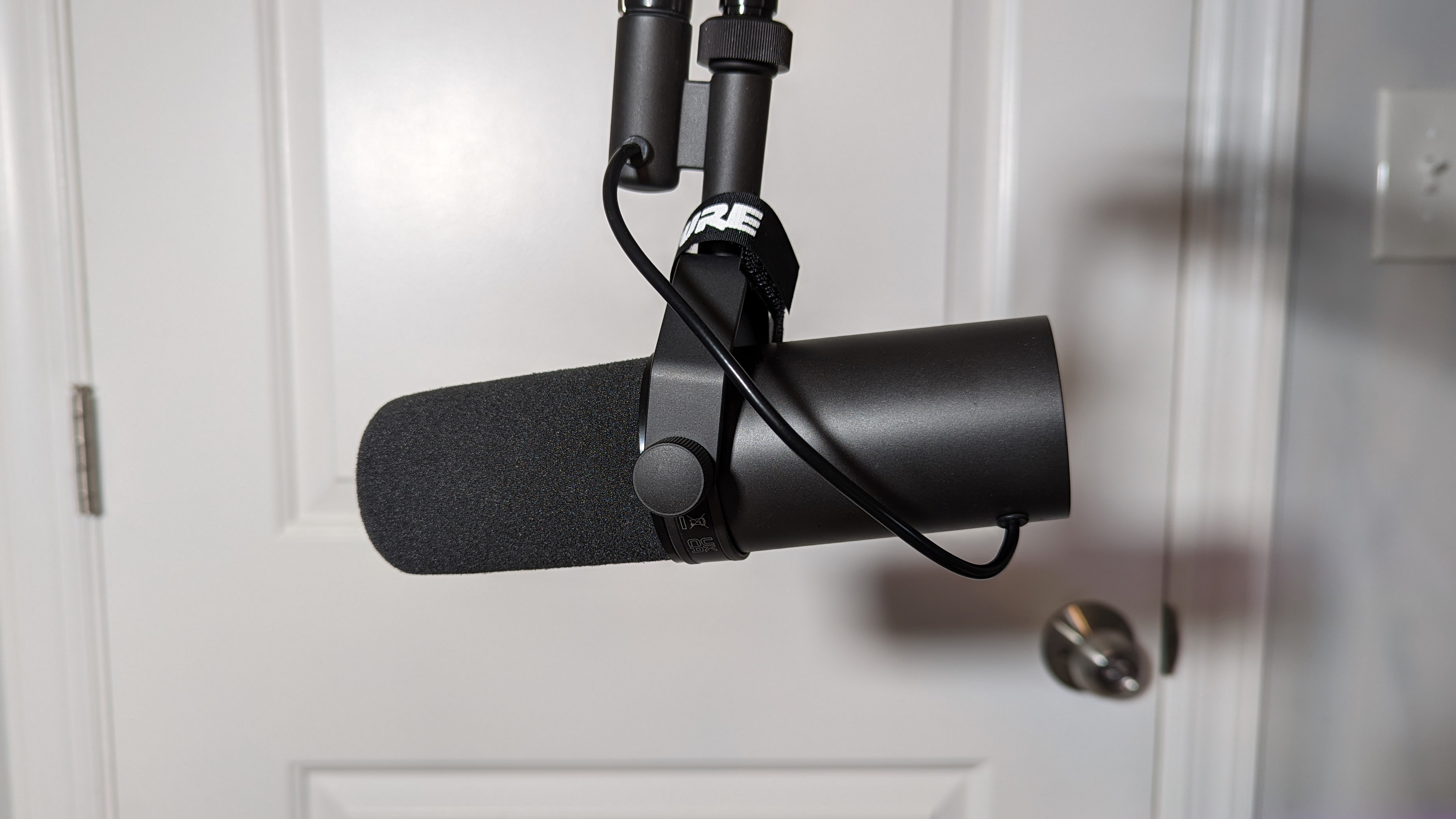
For $503, you can pick up the Shure SM7B with a boom arm and a 15-foot XLR cable. That may seem expensive for an arm and a cable for the untrained eye, but getting a cable or an arm separately could run you more than that, depending on the brand you’re buying from. And yes, the type of cable you get matters. However, we haven’t tested the cable that Shure provides, so we cannot speak to that.
For $602, you can get the Shure SM7B bundle that comes with the aforementioned products as well as Shure SRH440A headphones, which are $99 studio headphones.
Shure SM7B design
The Shure SM7B sports a svelte black chassis that’s unassuming yet iconic. Your favorite podcasters, streamers and YouTubers are likely rocking this very microphone. The base is a simple black cylinder that feeds into a metallic band with the branding as well as two screws for the mount and XLR input.
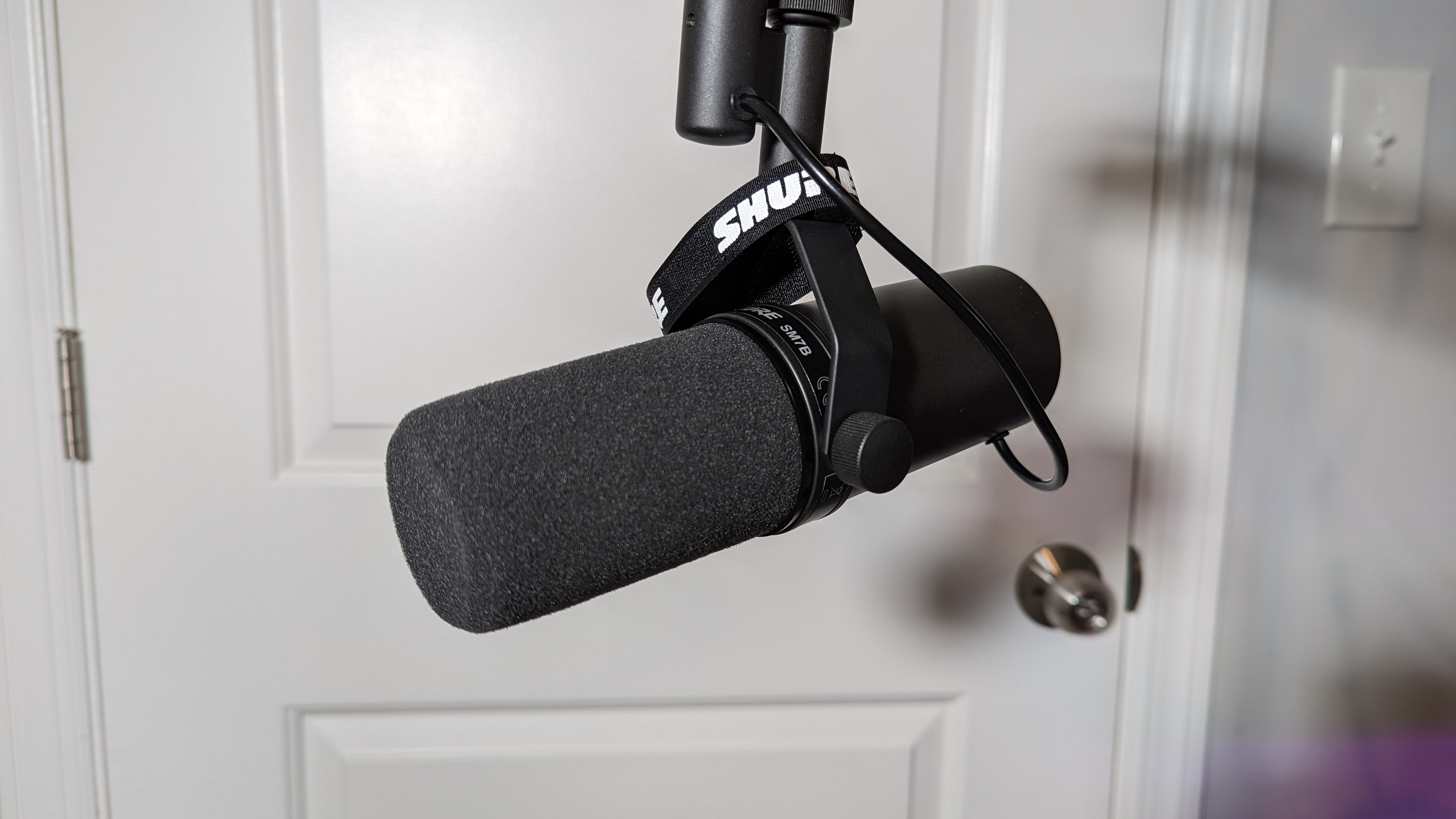
Beyond that, there’s the already attached windscreen. I attempted to take it off to see the interior, but I almost ripped it apart because the instructions were incredibly unclear. It just shows an image of someone pulling it off. But when I looked it up, I found out that there’s a thin plastic piece you’re supposed to pull in order to take it off. The interior features a solid metal cage.
The instructions concerning the larger windscreen were equally unclear because of course there’s no plastic piece. Instead, you have to manually attach velcro straps to the base of the mic in order to install it. Why does this have to be so complicated?
On the backside of the Shure SM7B are the manual switches for the EQ. Out of the box, it’s set to the Flat Response setting, but you can adjust it for Bass Rolloff or Presence Boost. The attachment at the top can be adjusted for 5/8 or 3/8-inch threaded boom arms.
Shure SM7B audio quality
The Shure SM7B is a cardioid XLR microphone, which means it has a heart-shaped polar pattern (it’ll pick up sound only within that shape, with the bottom of the heart facing you). If it wasn’t obvious, you can’t just connect the Shure SM7B directly to your laptop, so first and foremost you’ll need a mixer as well as an XLR cable. I am using the Razer Audio Mixer ($250) with a Mogami Gold Studio XLR cable ($99).
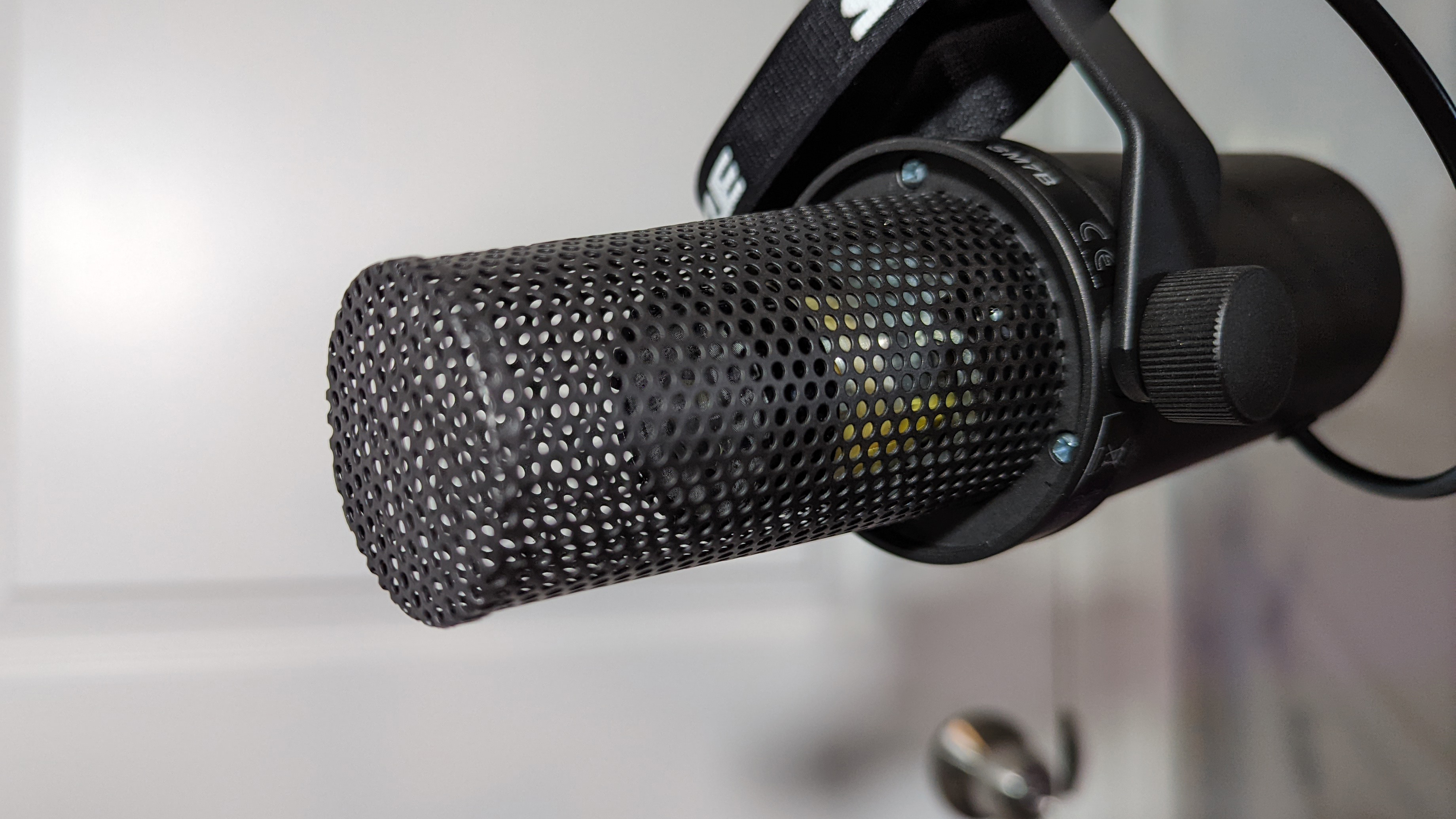
When I hopped on a call with my sister, she was immediately impressed with the sound of my voice and how well the Shure SM7B could pick up the faintest whisper without a modicum of background noise. This is incredibly important for me, especially when I roleplay soft-spoken characters in my DND games.
Apart from adjusting the gain, I didn’t have to do anything to make the Shure SM7B sound good. It just did. I put in a few auditions for some voice acting parts, and I didn’t have to play DJ with the gain because I was peaking or producing plosives while yelling. It all sounded superb.
My vocals were smooth and crisp with a tinge of warmth. It’s excellent at picking up low dialogue and making it sound full. Louder dialogue can be a bit tricky, but you just need to balance how much gain you are putting through.
Shure SM7B software
There is no dedicated software for the Shure SM7B, unfortunately.
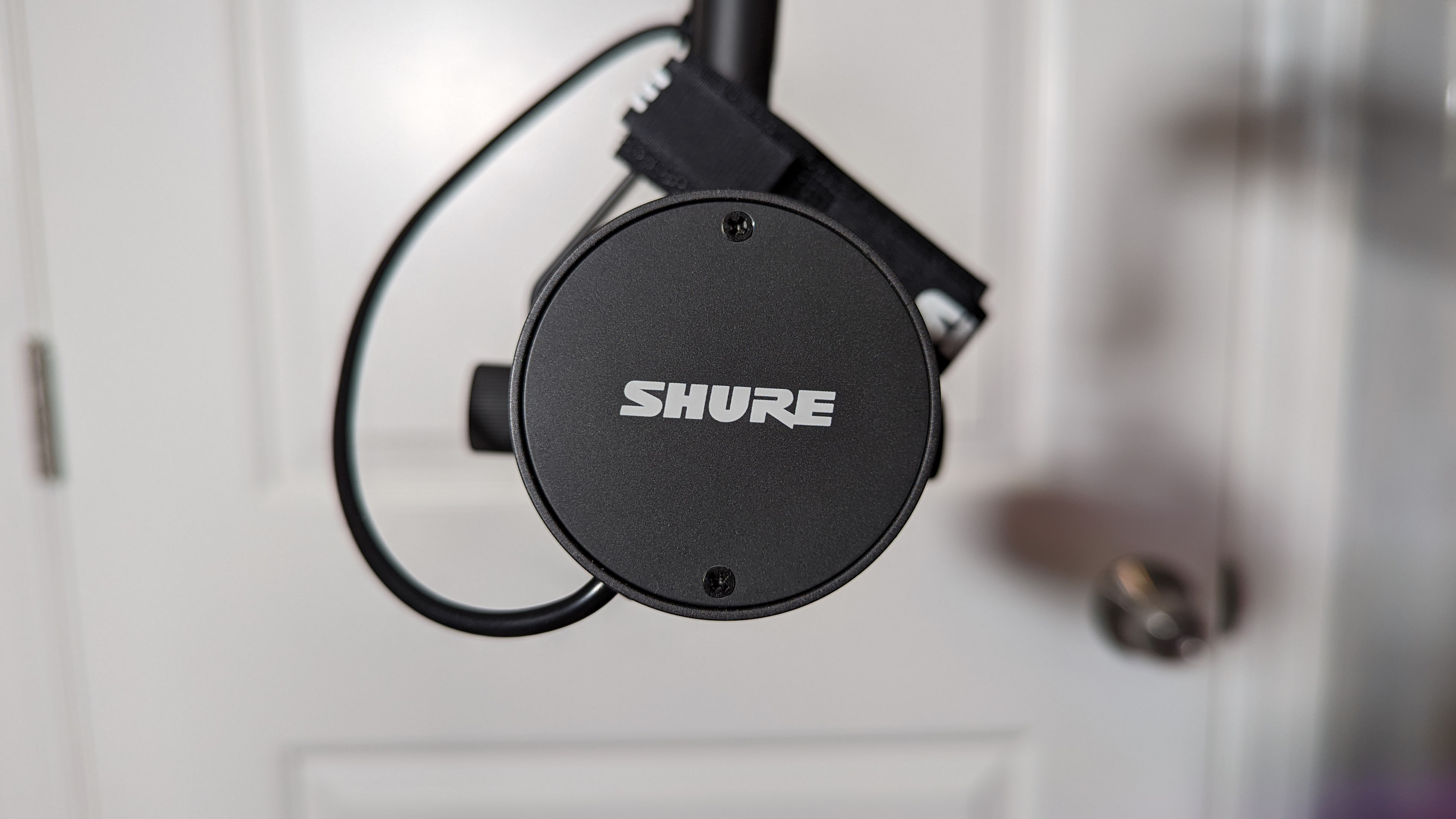
That’s mostly because you’ll be operating through a mixer, since this is an XLR microphone. The first thing I recommend doing is turn on a noise gate around -54dB because the microphone does pick up a low static that can be heard in some of my Audacity recordings.
Bottom line
I love the Shure SM7B — I have never been more excited for a DND game since I’ve gotten a hold of this microphone. I feel confident that all of my mannerisms and low grumbles are perfectly translated to my friends on the other side.
However, I would be remiss to say that this microphone is really expensive for a reason — it’s meant for professionals, so if you’re a podcaster, voice-over artist, or streamer, this might be great for you. But if you just want a quality mic to play games with, I suggest getting the much cheaper Blue Yeti X (and you don’t even need a mixer for that).
But overall, you seriously cannot beat the quality of the Shure SM7B. If you have the cash, buy it!


